In fiber optic technology, it is very important that optical networks are kept intact and functional. Rapid identification and location of faults in fiber optic cables is necessary for this kind of maintenance. The Fiber Visual Fault Locator Kit is an essential tool for network technicians and engineers; it provides an accurate and quick method of finding such problems as breaks, bends or faults that may affect the network’s operation. This post aims to present a detailed description of the Fiber Visual Fault Locator Kit, including its characteristics, applications, and technical principles, which make it a must-have in the field of fiber optic maintenance. After reading through this article one should have gained enough knowledge on how they can effectively utilize this kit in ensuring maximum performance and reliability of their fiber optic networks.
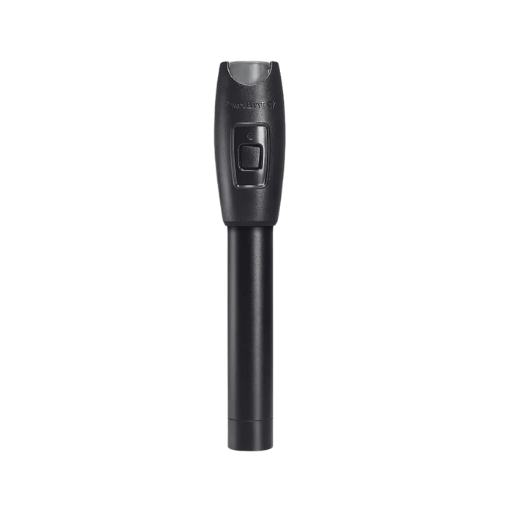
A device that is highly specialized and used in fiber optic testing to recognize and locate faults within optical fibers by emitting visible light is called a visual fault locator (VFL). The VFL injects powerful red laser light into the fiber core when it is connected to a fiber optic cable so as to act as a cable continuity tester. This can allow the light to scatter or leak at the point where there are any breaks, bends, or other faults, hence making it possible for technicians to see exactly where the problem area is located. Such an easy yet efficient way helps diagnose quickly and solve problems easily in different applications involving fiber optics.
A visual fault locator functions by inserting visible red laser light into the fiber optic cable. If there’s any abnormality like breaking, bending, etc., these results cause leakage or scattering of light at such locations. This allows the naked eye to see where leakage has occurred, thereby helping determine the exact places where these failures happened most accurately. The simplicity and efficiency make it the best method for quick identification of these issues without using complicated instruments – such as cable fault locators.
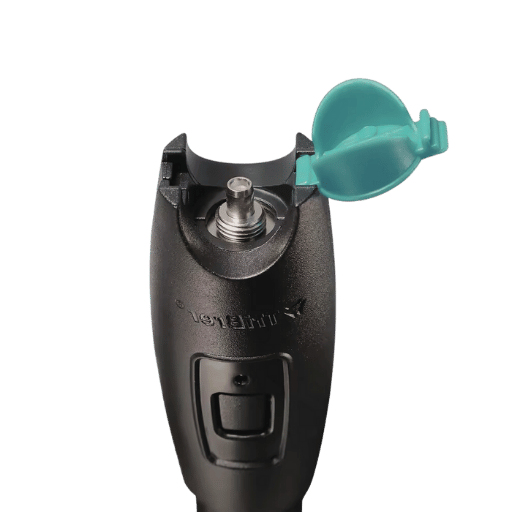
By following these steps, technicians can effectively use a visual fault locator to identify and pinpoint faults within fiber optic cables, facilitating rapid repair and minimizing downtime.
Following these instructions will enable technicians to detect faults more accurately as well as quickly in fibre optic cables by visual fault locators (VFLs).
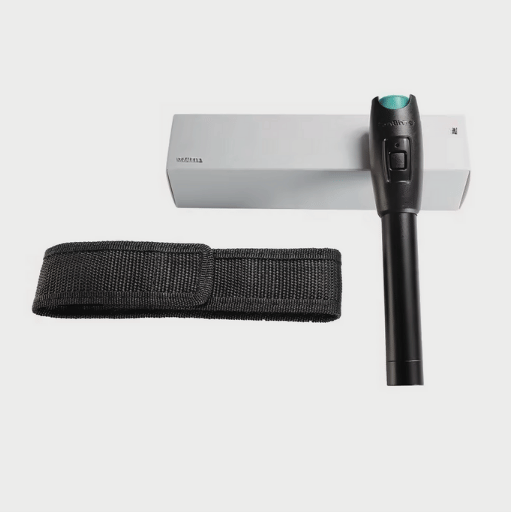
Compact, handheld pen-type visual fault locators are used to find faults in fiber optic cables. In general, they emit a bright red laser that can see breaks, bends or other problems in the fiber. Because they can be carried around easily and operated simply, these tools are ideal for field use. Also, their affordability makes them popular choices for quick on-site diagnoses in different fiber optic maintenance situations.
Handheld visual fault locators are versatile tools designed for use in finding more extensive faults within fiber optic systems. These come with ease-of-use features as well as increased functions such as stronger laser outputs and longer battery lives compared to pen-type units. Many models have multiple operating modes, including continuous wave and pulsed, so that they may be used under different test conditions. Both field and laboratory applications commonly utilize this equipment, which is necessary during comprehensive diagnosis processes, along with routine maintenance practices on any fiber optic network.
A kit consisting of various accessories and components required when detecting faults on fibers is known as a visual fault locator kit. Among others, these kits usually have adapter heads for different connector types, protective carrying cases, cleaning tools, etcetera. The main advantage of such kits is their all-inclusive nature, making them versatile enough even for starters but also efficient for experienced technicians who might need to do many tests at once or save time during the accurate detection process by having everything needed within reach, thus eliminating the need for additional purchases.
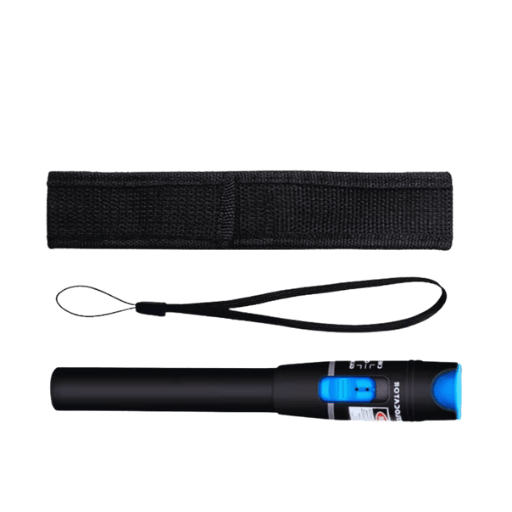
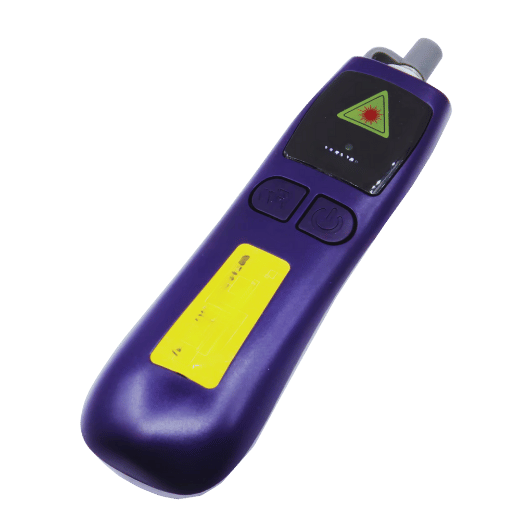
One cannot find cable breaks and faults without visual fault locators (VFLs) in fiber optic networks. Discontinuity points within the cable are illuminated by VFLs, which emit a powerful visible red laser light through the fiber. These broken parts can be seen with the naked eye, hence enabling fault-finding technicians to locate them accurately. It is useful for large curvatures, microbeads, or twisted connectors, among other things, that may cause incorrect alignment or damage to fibers, so this method greatly simplifies troubleshooting processes while ensuring that necessary repairs are made promptly on-site.
To ensure the reliability of fiber optic networks, it is vital to test cable continuity as well as connector integrity. The whole length should be uninterrupted; therefore, this calls for the use of Visual Fault Locators (VFLs), which check whether there are any misalignments at connectors or not. Continuous signal transmission can be verified by sending visible red light through fiber, thus helping technicians detect where there may be leakages indicating possible damaged connectors or faulty alignments at these points where two cords meet each other. This step must never be skipped if we want our system to work perfectly without losing signals.
Visual fault locators play a great role in ensuring network performance and reliability since they help identify signal degradation causes. They work by precisely locating breaks, bends and connector faults thus speeding up repair works. They also verify cable continuity and connector integrity, which ensures that a minimum amount of light gets lost within an optic fiber network due to faults along its length. This approach allows quick fixing of problems whereby delaying them would lead to more serious complications, eventually affecting overall performance levels attained by such communication systems;
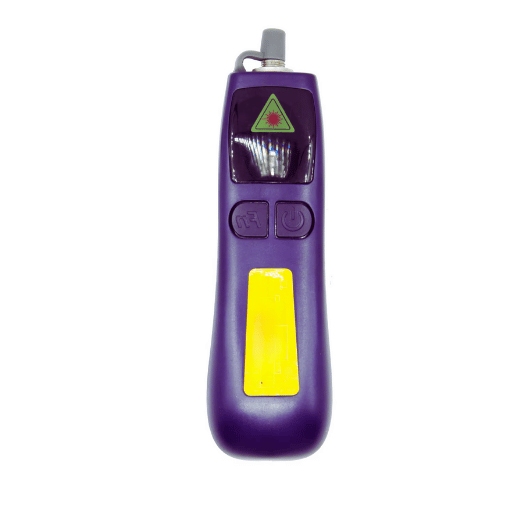
A: A fiber visual fault locator kit is used for finding and tracing faults in fibre optic cables. These kits commonly have a visual fault locator which emits a strong red light to help locating breaks or leaks in fiber cables.
A: The visifault visual fault locator and other such fiber optics work by injecting a visible red light source into the fiber cable. This light becomes visible through the cable jacket when it meets with a fault like a break or bend, enabling technicians to identify where exactly there is an issue.
A: Different types of fibers are compatible with these kits; single-mode fibers, multi-mode fibers among others. In addition to 2.5mm universal connectors for different connector sizes, most kits come with adapters that can fit various connector types making sure all cables are tested thoroughly.
A: Common components found in most Fiber Visual Fault Locator Kits include but not limited to; (50mw) Visual fault locator units, replacement batteries, adapters for different connector sizes as well as carrying cases among others from Jonard Tools. Some kits may also include extra tools like meters for testing fibre optic cables’ performance and cleaning supplies.
A: This device ensures that there are no twists longer than certain lengths or breaks along the entire length of any given fiber link during continuity tests. The fault finder’s bright red light will clearly show if there is an optical defect hence speeding up accurate testing of such connections.
A: Yes, Fiber Visual Fault Locators are safe in general as long as they are used following the manufacturer’s instructions. They employ a low-power laser diode which is harmless for checking fiber. However, it’s advisable not to stare directly into the beam and take necessary safety precautions.
A: Absolutely, a Fiber Visual Fault Locator is an ideal instrument for troubleshooting fiber networks. It helps identify problems like fiber breaks, connector problems and issues with splicing thus ensuring that your fiber network remains efficient and reliable.
A: Simplicity and effectiveness in identifying faults within fibers are the key benefits of using visual fault locator fiber optic. Unlike electronic testers that may need complex setups, a visual fault locator gives instant feedback by showing where exactly there is a problem in the fiber cable hence making it easier to quickly find and fix them.
A: Red light pen testers are commonly found in Fiber Visual Fault Locator Kits because they can easily detect breaks, bends or faults on fibers due to their high visibility. These pen testers are also convenient for fieldwork since they are portable yet very effective.